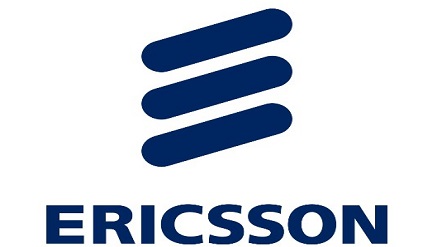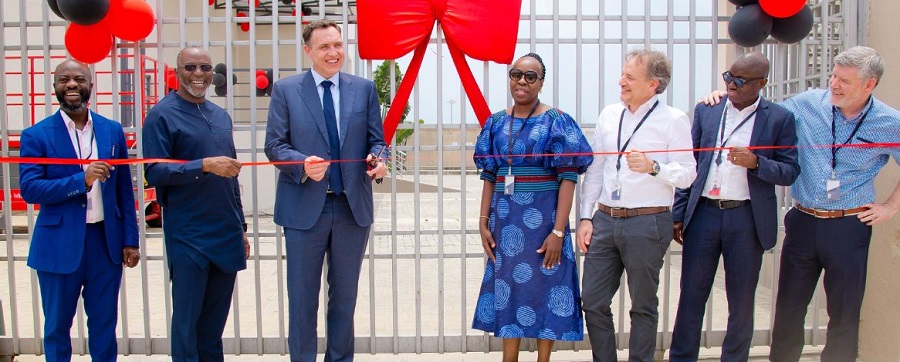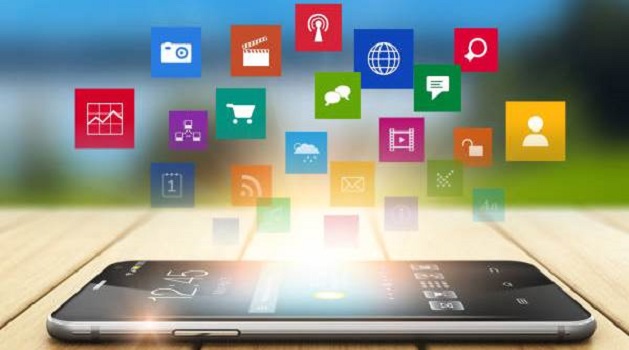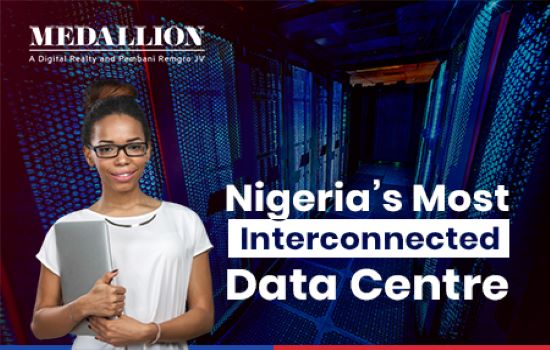E-Business
Ericsson Leads Drive to Connect 50% World Population by 2020

Globally, there are 2.5billion subscribers online today with 20% of Sub-Saharan African population with access to the internet as at December 2015 coming from Nigeria, Ericsson is not relenting on its oars to connecting 50% of world population yet unconnected.
To this end, Ericsson has launched a new suite of solutions consists of: Ericsson Site Manager software paired with Ericsson Site Controller, Radio 2219, Antenna Integrated Radio, AIR2488, MINI-LINK 6363, MINI-LINK 6651 indoor unit and new additions to the Ericsson Enclosure family. It also includes new software enhancements to both the Zero Touch WCDMA and Flow of Users solutions.
The solutions are aimed at helping telecom operators deliver outstanding user experience, ensure sustainable coverage growth and build cost efficient MBB coverage.
The new suite of solutions, which includes software and hardware additions to Ericsson Radio System, provide the capabilities needed to reduce the total cost of ownership by up to 40 percent when rolling out Ericsson’s total site solution for mobile broadband, making investments in low-ARPU markets viable.
To complement deployment of the solutions are new unique mobile broadband tools, which allow operators to identify which sites in a GSM/EDGE coverage area have the highest number of users who already have internet-ready devices. Operators can then determine where it makes more sense to convert those sites first to HSPA or 4G/LTE, so that the greatest number of people will enjoy the benefits of mobile broadband.
The Broadband Commission for Sustainable Development, co-chaired by ITU and UNESCO, has championed the vital role that ICT (Information and Communication Technology) plays in laying the foundation to achieving the UN Sustainable Development Goals, and its new report to be launched later this week highlights that the digital divide is shifting from basic telephony to internet.
The Broadband Commission estimates that it would cost 450 billion USD to bring the next 1.5 billion people online.
Arun Bansal, head of Business Unit Network Products, Ericsson, said: “These are among the most important additions to our product portfolio for mobile broadband coverage growth ever. Ericsson supports the International Telecommunication Union’s Connect 2020 target of ensuring that more than 50 percent of people in the developing world are using the internet by 2020.In order to reach this goal, together we will need to connect roughly 500,000 new users to the internet each day. Ericsson continues innovating so that operators can create viable business even in rural or off-grid settings, and to make the most difference with every investment.”
Daryl Schoolar, principal analyst, Intelligent Networks, Ovum, said “These innovations address investment pain points while also considering the current situation and environment of many of these builds. Ericsson is unique in their multifaceted approach and focus on spurring mobile broadband adoption in these developing markets.”
The new solutions address the significant divide in internet adoption between developed and developing countries–only four out of ten people in developing countries are connected to the internet and about 15 percent of the world’s population do not have access to electricity– and the innovations follow a trio of solutions for developing areas unveiled in February this year: Flow of Users, Zero Touch and Mobile Broadband Expander.
Jean-Claude Geha, head of Region, Sub-Saharan Africa, says: “As at 2015, GSM/EDGE still accounted for close to 70 percent of the total mobile subscriptions in sub-Saharan Africa. As a technology leader, we continuously seek to develop sustainable ways to provide quality mobile broadband coverage — even in the unconnected areas. These energy-efficient suites of solutions will enable operators to seamlessly identify underserved communities in the region, making it faster to introduce or improve the mobile broadband experience of their subscribers. This will open new opportunities in far flung areas in the region, creating access to new services such as mobile money, e-health, e-education and e-government, thereby transforming the way people play, learn and do business forever.”
Ericsson WCDMA
In February 2016, Ericsson launched its WCDMA solution that allows operators to maintain an optimal flow of smartphone users through a 3G/WCDMA network.
It uses a defined selection of software features and settings to automatically balance active user count and consumer experience. As a result, operators can maximize smartphone user experience, even during busy traffic-load conditions, while ensuring high-quality voice services.
The solution is already proven in the field, with global operators successfully doubling – or better – their network uplink and downlink throughput performance, while substantially reducing dropped call rates.
Zero Touch WCDMA
The Zero Touch WCDMA approach industrializes the Flow of Users solution across all features and parameters in a 3G/WCDMA network, resulting in what can be termed a gold standard.
Mobile Broadband Expander with Intelligent Antenna Sharing
Currently, hundreds of thousands of legacy 2G/GSM sites can only be upgraded to 3G/WCDMA by adding a complete WCDMA RBS or by completely replacing the GSM site with a GSM and WCDMA site.
Ericsson Intelligent Antenna Sharing, the latest addition to Ericsson’s Mobile Broadband Expander concept, removes this requirement by enabling antenna reuse between existing GSM sites and new WCDMA equipment, as well as reuse of site power, microwave and transport infrastructure.
Reusing resources in this way can reduce TCO by more than 60 percent compared with building a conventional site, and supports accelerated rollout of 3G technologies.
E-Business
Equinix Launches LG2.3 Data Centre in Nigeria

Equinix, global digital infrastructure company, has launched a cutting-edge LG2.3 data centre in Lagos aimed at fueling Nigeria’s booming tech scene.

Equinix officials at the launch
The data centre is designed to provide businesses with secure, reliable, and high-performance colocation and interconnection services, crucial for supporting the increasing demand for digital services across the region.
Nestled in the bustling Lekki Free Zone, LG2.3 is packed with the latest tech, offering businesses the secure and lightning-fast connections they crave. Think of it as the engine room for Nigeria’s online world, designed to handle the explosive growth of digital services.
The launch featured Bruce Owen, president, Equinix’s EMEA, who cut the ribbon to open the data centre.
“Nigeria is our focus,” Owen declared, emphasizing Equinix’s dedication to powering the nation’s digital growth. “The energy here is incredible, and we’re excited to be part of it.”
On his part, Wole Abu, managing director, Equinix’s West Africa, echoed this sentiment highlighting the increasing global demand for digital infrastructure.
“Africa is on the cusp of a digital explosion, and we’re here to support that growth,” he said.
Nigeria’s digital adoption is skyrocketing, driven by a young, tech-savvy population. Businesses are racing to embrace online platforms, and LG2.3 is perfectly positioned to meet their needs.
This investment is set to create a ripple effect, boosting the economy, creating jobs, and fostering innovation.
LG2.3 is set to be a beacon for Africa’s tech potential.
Equinix’s confidence in the continent aims to attract more global players, turning Africa into a digital powerhouse.
This data centre will act as a vital connection hub, empowering businesses to connect and collaborate, bridging the digital divide.
Equinix’s vision extends beyond Nigeria, with plans to expand across Africa.
strategic move reflects their commitment to building a connected and thriving digital ecosystem.
The success of LG2.3 is a testament to the power of public-private partnerships, with the Nigerian government playing a crucial role in attracting investment.
As Nigeria marches towards a digital future, Equinix’s LG2.3 data centre will be a key driver of progress. It’s a powerful symbol of Nigeria’s digital ambition and a catalyst for Africa’s tech revolution.
E-Business
Microsoft Marks 50th Anniversary with Major Copilot AI Update

Microsoft is celebrating its 50th anniversary with a major leap forward into artificial intelligence, unveiling significant updates to its AI assistant, Copilot.

The announcement was made on April 4, 2025, at the company’s headquarters in Redmond, Washington, marking a milestone for both Microsoft and the AI industry.
As the tech giant celebrates its golden anniversary, the company is setting its sights firmly on the future, particularly with its AI-driven tools.
Microsoft’s Copilot, which has been integrated into various software tools across its ecosystem, has now received a significant upgrade.
The new features aim to make the Copilot assistant more intelligent, personalised, and proactive, which positions Microsoft as a serious competitor in the AI space against other industry leaders such as OpenAI’s ChatGPT and Anthropic’s Claude.
Mustafa Suleyman, head of Microsoft’s AI division, expressed the company’s ambition, saying, “We envision Copilot not just as an assistant, but as a long-term AI companion, one that can learn, adapt, and evolve alongside its users. This goes beyond just responding to commands; it’s about fostering relationships between users and their AI.”
The most notable update to Copilot is its new memory functionality. Now, the assistant can retain information such as preferences, previously used commands, and even personal context, making it more responsive and efficient in future interactions.
This means Copilot can, for example, anticipate a user’s needs based on past behaviours, from scheduling meetings to suggesting restaurants for a night out.
In addition to the memory features, Copilot’s new “Vision” capabilities extend the AI’s functionality across multiple platforms. Windows and mobile users will now be able to interact with Copilot using both the camera and on-screen elements.
This includes actions such as booking appointments, managing tasks, and even shopping online — all in a more interactive and seamless way.
Scott Guthrie, Microsoft’s Executive Vice President, shared his enthusiasm about the potential of these advancements, stating, “With these new capabilities, we’re not just reacting to AI’s capabilities — we’re shaping the future of how users interact with technology. AI can do so much more than just assist with tasks. It can enrich the human experience.”
The updated Copilot is designed to challenge industry competitors like ChatGPT and Claude, offering more personalised and context-aware interactions.
Microsoft has positioned its Copilot as a tool that not only assists users but builds a deeper, more intuitive relationship over time.
The company has also placed a strong emphasis on AI accessibility. With AI’s growing role in everyday tasks, Microsoft aims to make it easier for users to adopt and benefit from these technologies, regardless of their technological proficiency.
Despite past challenges, including legal disputes over privacy and AI ethics, Microsoft continues to push boundaries in the AI space. Guthrie remarked, “This is just the beginning. As we continue to innovate, we are reshaping how people work, interact, and live with technology.”
With Copilot’s advancements, the tech giant hopes to continue its legacy of innovation, making AI tools accessible and useful for people around the world.
E-Business
Report Suggests a Slash in Mobile App Usage By 2027 Due to AI Assistants

By 2027 mobile app usage will decrease by 25 per cent due to AI assistants according to Gartner, Inc. Smartphone users will turn to AI assistants, such as Apple Intelligence, ChatGPT, Google Gemini, Meta AI, and others to replace apps for many functions.

In addition to the impact of AI assistants, apps will be consolidated across separate brands and companies, creating mobile app partnerships or consortiums to reach more users per app at scale and defray the cost of creation and maintenance.
“CMOs should begin scenario planning for the impacts of decreased mobile app usage,” said Emily Weiss, Senior Principal for the Gartner Marketing Practice.
“Brands with low app engagement and retention will likely be first impacted – this will be a positive development for brands that are not overly reliant on driving revenue via apps as app development costs will decrease.
Other brands may be severely impacted by the disintermediation of users turning to AI assistants for services. The loss of app users will also result in the loss of first-party data collection and the ability to reach fewer users via mobile push notifications,” Emily added.
By 2026, Over 1/3 of Web Content will be Created for the Purposes of Gen-AI Powered Search According to Gartner’s 2024 CMO Spend Survey of 395 respondents between February and March 2024, the average CMO allocated almost a quarter of their digital marketing budget to search.
Other than end users directly visiting a website, search currently drives more traffic to the average commercial enterprise website than any other referral source.
Given this, a loss of search driven traffic due to algorithmic shifts by major search engines would result in tangible, negative commercial impact to any organisation.
“CMOs will need to direct their teams to hire talent with a strong understanding of how GenAI, and broader AI influences, impacts the performance of their content in search algorithms,” said Weiss.
“It will be important to upskill the function by investing in search and content talent with AI skillsets. These associates will need to have familiarity with creating or optimising content to train and rank within evolving search algorithms,” she said.
By 2028 digital Mlmarketers will move 30 per cent of their paid social budget to support advertising and partnerships on subscription-based channels It is becoming more challenging for CMOs to maintain, let alone grow, their reach and engagement among consumers.
This is especially true as consumers shift their tech and media behaviors away from social media, to other platforms and subscription based channels.
Gartner’s 2024 CMO Spend survey found that since 2022, paid social has maintained the highest budget allocation for all digital media spend. In 2024, B2C Marketing leaders reported allocating 14.3 per cent for their digital channel budget to social media advertising (an increase from 12.3% in 2023).
“Closed group communities and subscription channels of – fer a potential alternative for social media weary consumers and content creators who want to do more than feed the algorithm,” said Weiss.
“Brands can leverage closedgroup subscription channels – such as Substack, Patreon, and Discord – and the professional creators on them to reach relevant target audiences who are already engaging with content they self-selected into consuming,” she added.
Current AI models, such as large language models (LLMs), lack the agency to autonomously execute tasks and adapt in complex environments.
However, as new levels of intelligence are added, new AI agents are poised to quickly become more capable and reliable as brands seek to address customer facing use cases.
“There will be more AI agents than people, so while current approaches require humans in the loop, this idea will quickly become antiquated.
Marketers will need to determine when and how they can trust AI agents to act on behalf of the brand and customers across key areas,” said Weiss.

 General News3 days ago
General News3 days agoAirbnb Community Fund Donates ₦13 Billion to Nonprofits Worldwide

 General News3 days ago
General News3 days agoNigerian Military Makes History with Africa’s First Attack Drones, Bombs

 News3 days ago
News3 days agoShell, Renaissance Face Legal Action over SPDC Licence Transfer

 Telecom2 days ago
Telecom2 days agoMTN Denies Data Theft Allegations, Says no Financial Incentive to Do So

 Telecom3 days ago
Telecom3 days agoNigeria Heads Anglophone Data Protection Committee

 E-Business3 days ago
E-Business3 days agoKike, Nigerian Tech Firm Launches ‘Kike AI’ for Kitchen Innovation

 E-Financial3 days ago
E-Financial3 days agoSterling Bank Makes Online Transfer Charges Free of Charge

 News3 days ago
News3 days agoWorld Bank Approves $1.08Bn Loan for Nigeria















